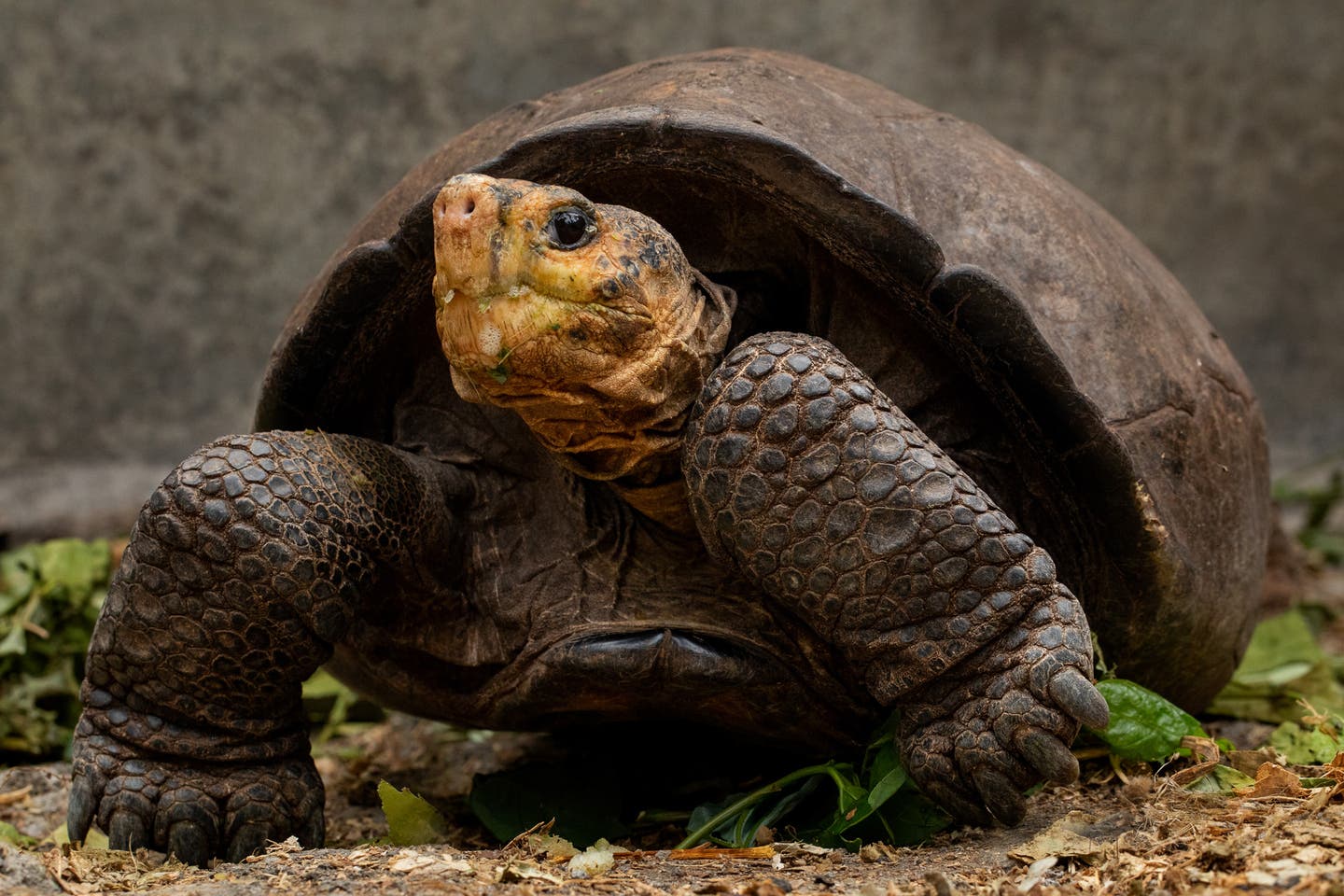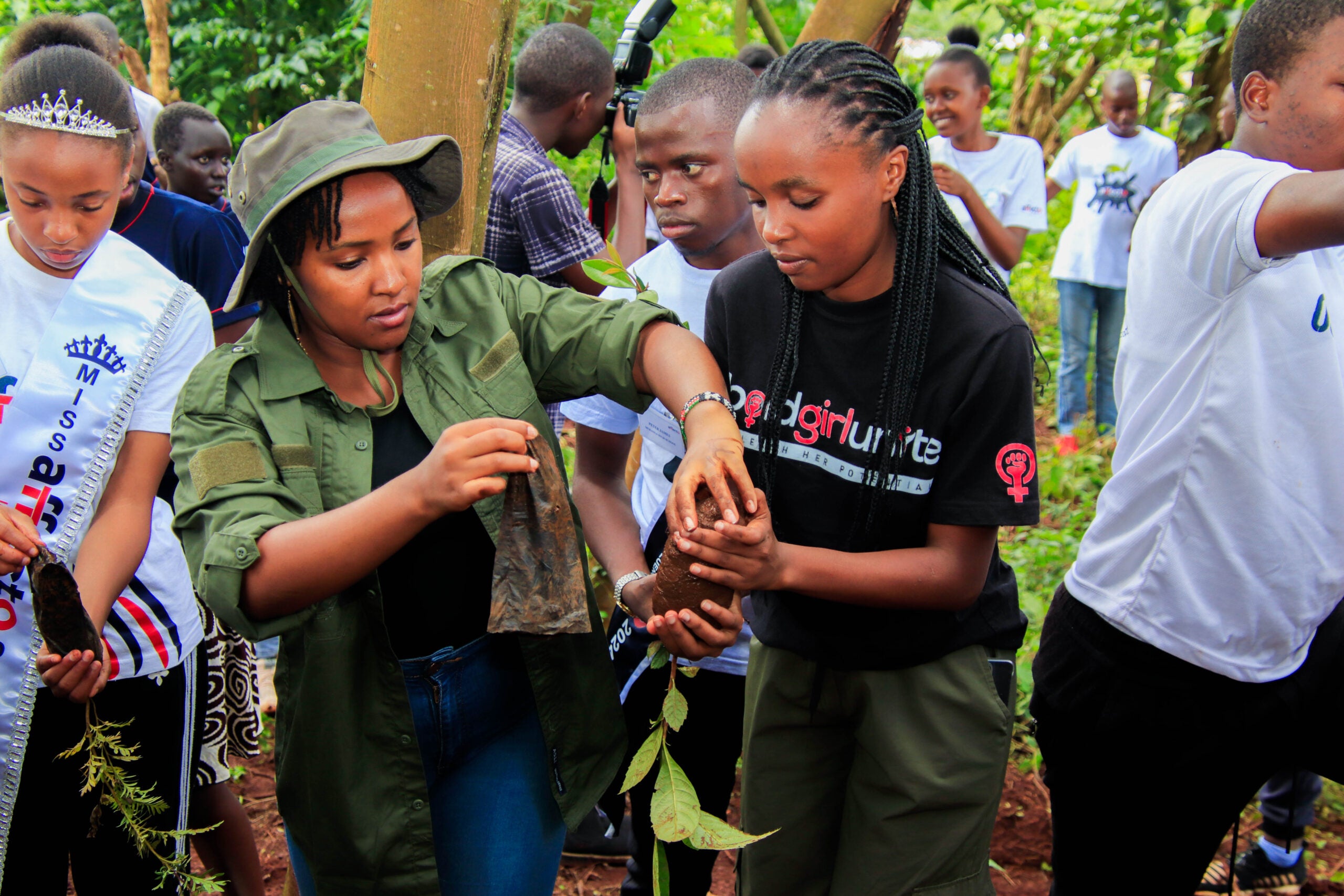Giant tortoises are the best-known animals in the Galápagos Islands, but one lone tortoise is spurring hope for a lesser-known species, one that has been lost to science since Teddy Roosevelt was president of the United States. Scientists at Yale University--led by Dr. Gisella Caccone with support from Re:wild, Turtle Conservancy, Mohamed bin Zayed Species Conservation Fund and Galapagos Conservancy--this week confirmed a genetic match between the only individual Fernandina Giant Tortoise--collected in 1906--and a single female tortoise found during a 2019 expedition to Fernandina Island.
The expedition that found the tortoise, named Fernanda by those who found her (and known as Fern to others), was led by the Galápagos National Park Directorate and Galapagos Conservancy, and supported by Discovery’s Animal Planet.
The finding marks the seventh rediscovery of one of Re:wild’s 25 most wanted lost species as part of its Search for Lost Species program. Of the seven species from our most wanted list that have been rediscovered, the Critically Endangered Fernandina Giant Tortoise was the longest lost.
“Giant tortoises have always been a source of wonder and awe and now, through Fernanda, they are again taking up their mantle as a symbol of hope for our planet’s lost and endangered species and the protection and restoration of biodiversity,” says Don Church, Re:wild’s president. “We cannot rewild the Galápagos without its giant tortoises and are looking forward to supporting the Galápagos National Park Directorate and Galapagos Conservancy on upcoming expeditions this year to find other Fernandina giant tortoises for a conservation breeding program. If successful, we hope to someday see Fernanda’s offspring thriving on Fernandina.”
When the expedition team found Fernanda in 2019, she was on the periphery of the volcano, tucked deep inside a shrub complex. The main question the team had to answer was whether she was, in fact, the possibly extinct Fernandina giant tortoise or a different tortoise species in the form of an individual translocated from another island. For many years, for example, whalers and fishermen hunted the tortoises and moved them around from island to island.
With the mystery of whether Fernanda was, in fact, the Fernandina Giant Tortoise finally solved, now researchers need to determine if there are other individuals on the island and if so, if they are also Fernandina giant tortoises. Re:wild and Galapagos Conservancy are working to join efforts by the Galápagos National Park to support further expeditions.
Prior to 2019, the only other Fernandina giant tortoise that had ever been confirmed was the single male found in 1906. An expedition in 1964 discovered fresh tortoise droppings, and a flyover in 2009 reported sightings of what looked like a tortoise from the air, renewing hope that the species was still holding on. Fernandina Island is the geologically youngest, most pristine, and least-explored of the Galápagos Islands, mostly because it is remote and difficult to get ashore, and also because it is hard to traverse as 80 percent of its surface is covered in barren lava and the volcano regularly erupts.
“Without doubt, this discovery renews our hope of recovering this species,” wrote Danny Rueda, director of the Galápagos National Park Directorate, in Spanish in an Instagram post.
The genetic analyses at Yale are ongoing and researchers are submitting a scientific publication that will provide the actual results discussing the DNA match between Fernanda and the individual from 1906. The study will include implications of this find in the context of the evolutionary history of all Galápagos giant tortoises and the conservation needs of this particular lost species. Solid scientific information of this kind helps provide an important basis for conservation decisions and actions.
The news comes just one week after Re:wild joined the Galápagos National Park Directorate, Island Conservation, other organizations, and local communities, on a bold initiative to protect and rewild the Galápagos and beyond. The initiative aims to bring together the necessary private-public support--including governments, foundations, individuals, companies and organizations--to meet the scale of threats to the Galápagos, including an invasion of introduced species and industrial fishing.
Today’s population of giant tortoise species across the Galápagos is only 10-15 percent of the more than 300,000 tortoises that once called the archipelago home, as the result of initial severe overexploitation of adults by whalers, pirates and other mariners. This was followed by two centuries of nonnative introduced animals—rats, pigs, dogs and even ants—that preyed on the young or the eggs of the reptiles, while goats and donkeys also destroyed their habitat. All Galápagos giant tortoise species face some degree of threat of extinction, and three have already gone extinct.
The Galápagos National Park Directorate has a long history of managing tortoise breeding centers in the Galápagos, and monitors and manages all wild populations to facilitate their recovery. As of the end of 2017, the national park had raised and released more than 7,000 juvenile tortoises to their islands of origin, including Española, Isabela, Pinzón, San Cristóbal, Santa Cruz and Santiago. Since 2015 these efforts have accelerated under the Giant Tortoise Restoration Initiative (GTRI), a collaborative effort led by Galapagos Conservancy and the Galápagos National Park Directorate. Between 2015 and 2021, the GTRI released more than 500 juvenile and subadult Española Tortoises on Santa Fé Island, where tortoises went extinct in the mid-1800s.
The Search for Lost Species is the largest-ever quest to find and conserve wildlife lost to science for at least a decade. Re:wild has confirmed the rediscovery of six other species from its 25 most wanted lost species list: Jackson’s climbing salamander in Guatemala, both the Wallace’s giant bee and the velvet pitcher plant in Indonesia, the silver-backed chevrotain in Vietnam, the Somali sengi in Djibouti, and the Voeltzkow’s chameleon in Madagascar. In the coming months, Re:wild will be announcing seven new lost species--with their own fascinating stories--to replace those that have been rediscovered.
(All photos, including top image, by Lucas Bustamante)
Lindsay is the Director of Media Relations for Re:wild and has a particular interest in leveraging communications to inspire conservation action. Lindsay is passionate about species-based conservation and finding compelling ways to tell stories that demonstrate the value of all of the planet’s critters, big and microscopic.




